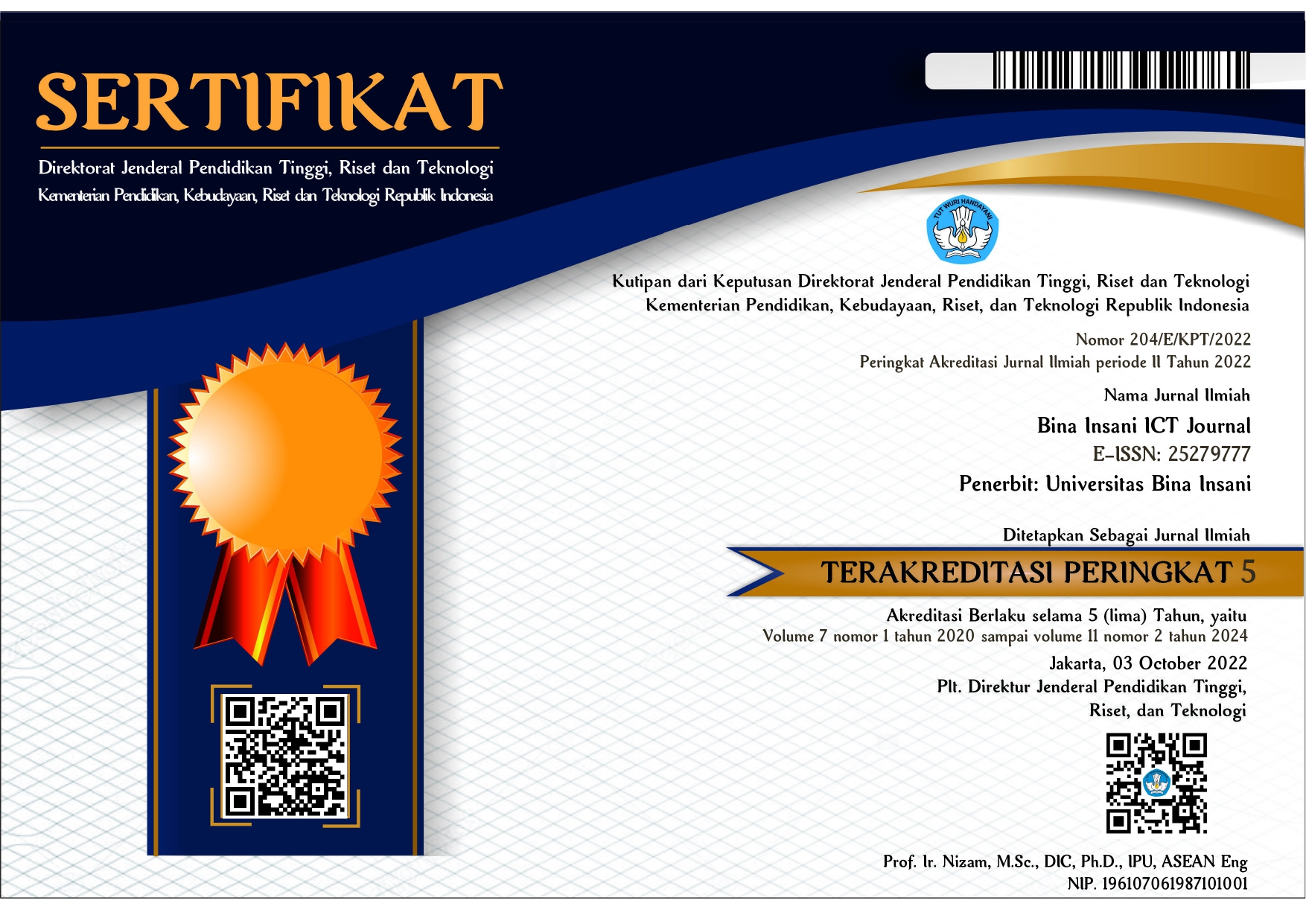Laporan Keuangan Menggunakan Executive Dashboard
Abstract
Abstrak: Perusahaan sebagai organisasi dalam penyusunan laporan manajemen, melakukanbanyak pekerjaan manual yang kadang-kadang membutuhkan waktu. Bentuk tampilan datayang kadang-kadang tidak representatif, Hal tersebut membuat kesulitan untuk menganalisisdan tidak ada alat untuk menampilkan sebuah laporan Executive. Oleh karena itu, perlu dibuatsuatu alat yang dapat membuat laporan eksekutif yang lebih baik. Penerapan LaporanEksekutif untuk mendukung pengambilan keputusan dengan menggunakan alat untuk membuattemplate pembuatan laporan eksekutif, sehingga mudah untuk melihat, terlihat lebih bagusdalam presentasi dan cepat untuk memperbarui data, untuk mendukung pengambilankeputusan, sehingga dapat memberikan gambaran sederhana dari langkah-langkah kebijakanyang akan diambil yang diharapkan dapat meningkatkan effektiftas, efisiensi, optimalisasi waktukerja. Metode penelitian yang digunakan adalah penelitan pengembangan. Data diambillangsung di lokasi penelitian dan dengan penelitian kepustakaan. Dengan alat implementasidapat membantu membuat laporan lebih cepat, lebih representatif dan lebih portabel untukLaporan Manajemen sehingga pekerjaan dilakukan lebih efektif, lebih efisien dan waktu kerjadapat dioptimalkan.Kata kunci: dashboard, laporan eksekutif, laporan keuangan
Abstract: Company as an organization in the preparation of management reports, doing a lot ofmanual work that sometimes takes times. The form of data display sometimes notrepresentative, it makes difficulty to analyze and there is not tools to perform Executive report.Therefore, it needs to be made a tool that can make a better executive report. Theimplementation of Executive Report to support decision making by using tools to make templaterepresentative executive report generation, so that it is easy to see, looks good in thepresentation and quick to make updating the data, to support decision making, so it can providea simple overview of policy measures to be taken which is expected to increase effektiftas,efficiency, optimization of working time. The research method used Research andDevelopment. Data was taken directly at the site and conduct research literature. With the toolsimplementation can help to reporting faster, more representative and more portable forManagement Report so that the work is done more effectively, more efficiently and working timecan be optimized.
Key Words: Dashboard, Executive report, Financial statement .
References
Guritno S, Rahardja U. 2011. Theory an application of IT Reasearch //Metodologi penelitian
teknologi Infirmasi. Andi Yogyakarta.
Koen Pauwels TA. 2009. Dashboards as a Service : Why, What, How, and What Research Is
Needed? Journal of Service Research, 12(2), 175–189.
http://doi.org/10.1177/1094670509344213.
Microsoft Dynamics Dashboard Solutions. (n.d.). Retrieved from
http://www.dundas.com/solutions/by-technology/microsoft-dynamics/.
Rasmussen N., Chen CY, Bansal M. 2010. Bussiness Dashboard - Mengendalikan Bisnis
Melalui Layar Monitor (Indonesia Pertama). PPM.
Resnick ML. 2003. Building the Executive Dashboard. Proceedings of the Human Factors and
Ergonomics Society Annual Meeting, 47(13), 1639–1643.
http://doi.org/10.1177/154193120304701311.
Sensuse DI, Suhaidir W. 2012. Perancangan Digital Dashboard System Untuk Menyajikan
Sensitivity Analysis Kinerja Keuangan Perusahaan Studi Kasus: PT.XYZ. Jurnal Sistem
Informasi, 6(2), 94–107.
Yigitbasioglu OM, Velcu O. 2012. A review of dashboards in performance management:
Implications for design and research. International Journal of Accounting Information
Systems, 13(1), 41–59. http://doi.org/10.1016/j.accinf.2011.08.002.
teknologi Infirmasi. Andi Yogyakarta.
Koen Pauwels TA. 2009. Dashboards as a Service : Why, What, How, and What Research Is
Needed? Journal of Service Research, 12(2), 175–189.
http://doi.org/10.1177/1094670509344213.
Microsoft Dynamics Dashboard Solutions. (n.d.). Retrieved from
http://www.dundas.com/solutions/by-technology/microsoft-dynamics/.
Rasmussen N., Chen CY, Bansal M. 2010. Bussiness Dashboard - Mengendalikan Bisnis
Melalui Layar Monitor (Indonesia Pertama). PPM.
Resnick ML. 2003. Building the Executive Dashboard. Proceedings of the Human Factors and
Ergonomics Society Annual Meeting, 47(13), 1639–1643.
http://doi.org/10.1177/154193120304701311.
Sensuse DI, Suhaidir W. 2012. Perancangan Digital Dashboard System Untuk Menyajikan
Sensitivity Analysis Kinerja Keuangan Perusahaan Studi Kasus: PT.XYZ. Jurnal Sistem
Informasi, 6(2), 94–107.
Yigitbasioglu OM, Velcu O. 2012. A review of dashboards in performance management:
Implications for design and research. International Journal of Accounting Information
Systems, 13(1), 41–59. http://doi.org/10.1016/j.accinf.2011.08.002.
Published
2016-12-01
How to Cite
ISTIYOWATI, Lucia Sri.
Laporan Keuangan Menggunakan Executive Dashboard.
BINA INSANI ICT JOURNAL, [S.l.], v. 3, n. 2, p. 317-328, dec. 2016.
ISSN 2527-9777.
Available at: <http://ejournal-binainsani.ac.id/index.php/BIICT/article/view/836>. Date accessed: 08 sep. 2024.
Section
Articles

This work is licensed under a Creative Commons Attribution-NonCommercial-ShareAlike 4.0 International License.
















